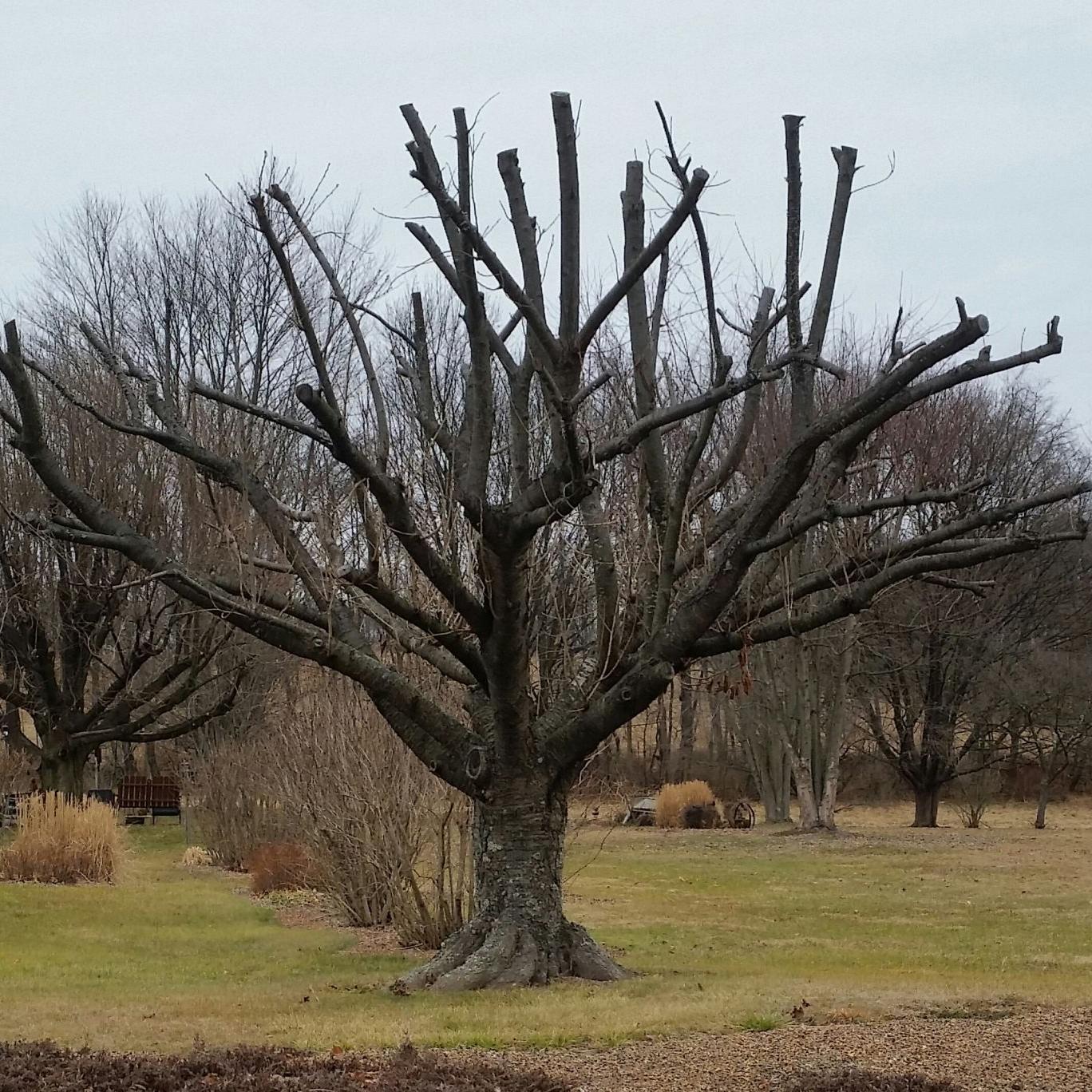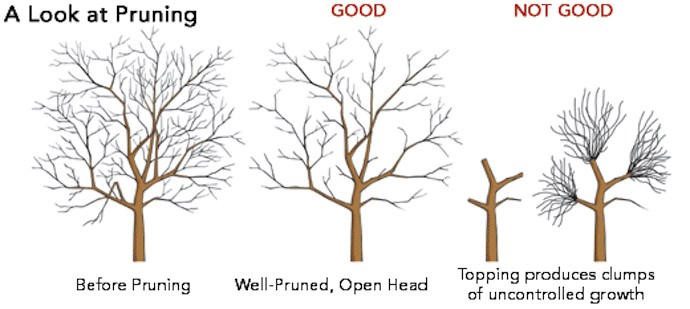Topping is a pruning practice that involves cutting back tree branches to stubs to reduce overall tree size. This practice is very common, driving around in southwest Virginia you can see trees that have received this type of pruning. It is believed by many homeowners and individuals that topping trees will reduce the tree size and keep them healthy, countless studies and research show otherwise.
When you remove a large part of the tree's crown you are removing a large percentage of its foliage, without it the tree cannot obtain enough nutrients to survive; this lack of nutrients will also decrease the strength of the root system (Why Topping Hurts Trees). Considering its lack of foliage and the large wounds suffered from the intense pruning, the tree becomes very stressed. When trees are stressed, they are much more susceptible to insect and disease infestations, these wounds also make the tree opportune for decay (Why Topping Hurts Trees). Trees typically have enough energy stored to defend itself against these issues, but once their foliage is gone, they have to use that energy to perform the regular functions it needs to survive, therefore it no longer has the ability to fight off any diseases that try to inhabit the tree.
After topping a tree, you may see new shoots that grow at a rapid pace, appearing as if the tree is healthy and growing back strong. In reality, these new shoots may give the appearance of rejuvenation, but they are extremely weak and won’t produce enough leaves to keep the tree alive, these limbs are also very likely to snap off in storms (Damsker). Considering most people top their trees to reduce the size, they will be unhappy when the tree quickly grows back to the original size, and that it will be significantly weaker than before. Generally, these topped trees are more likely to suffer storm damage or fall over because they are significantly weaker than they were prior to the pruning. Dr. Nuss says that “If you plan to top a tree in your yard because you fear it might blow over on your house, consider instead that a mature tree with a healthy root system is much less likely to blow over than a weak one with damaged roots” (Damsker). Aesthetically, the tree will never be the same. If it is strong enough to grow back at all, it will be disfigured and mutilated looking and will not be able to regain the natural form of that tree species; healthy trees increase your property's aesthetics and therefore increase your property value, but these unhealthy-looking trees will have the opposite effect (Why Topping Hurts Trees).
Not only does topping significantly harm the tree, but the results most people desire will disappear quickly as the shoots rapidly grow to attempt to regain some nutrients. Completing this practice is considered unacceptable and arborists can lose their licenses over it because it is considered “negligent” towards trees. There are alternatives to topping trees; pruning could be done properly and only to branches at a size that the tree would be able to heal over the wound, or you can remove the tree and plant something more suited to your property and needs. Overall, topping trees result in an unhealthy tree that will cause you more problems down the road than it’s worth. You will not receive the benefits you were originally seeking, and you are creating a larger problem for yourself than you originally had.
Summary of why topping trees is bad:
- Creates large wounds the tree can not heal
- Removes a large percentage of its foliage, without it it can’t photosynthesize and create enough energy to survive
- The decrease in nutrients causes a weaker root system
- An overall weaker tree means its more likely to suffer storm damage
- A stressed tree is more susceptible to insect and disease infestations and decay
- The trees look mutilated and disfigured
- Topped trees will decrease your property value
Works Cited
Damsker, Matt. “Better Not Top This!” Organic Gardening (08973792), vol. 40, no. 7, Sept. 1993, p. 18. EBSCOhost, search.ebscohost.com.ezproxy.lib.vt.edu/login.aspx?direct=true&db=a9h&AN=9308180229&scope=site.
International Society of Arboriculture. Why Topping Hurts Trees, ISA, 2013.
About the Author:
Plant Health Care Technician & Social Media Intern
Lexi Schnell
Lexi has joined the team this summer to assist with plant health care and run our social media accounts. She is majoring in Environmental Resource Management and is double minoring in Ecological Cities and Forestry at Virginia Tech.
Photos:


